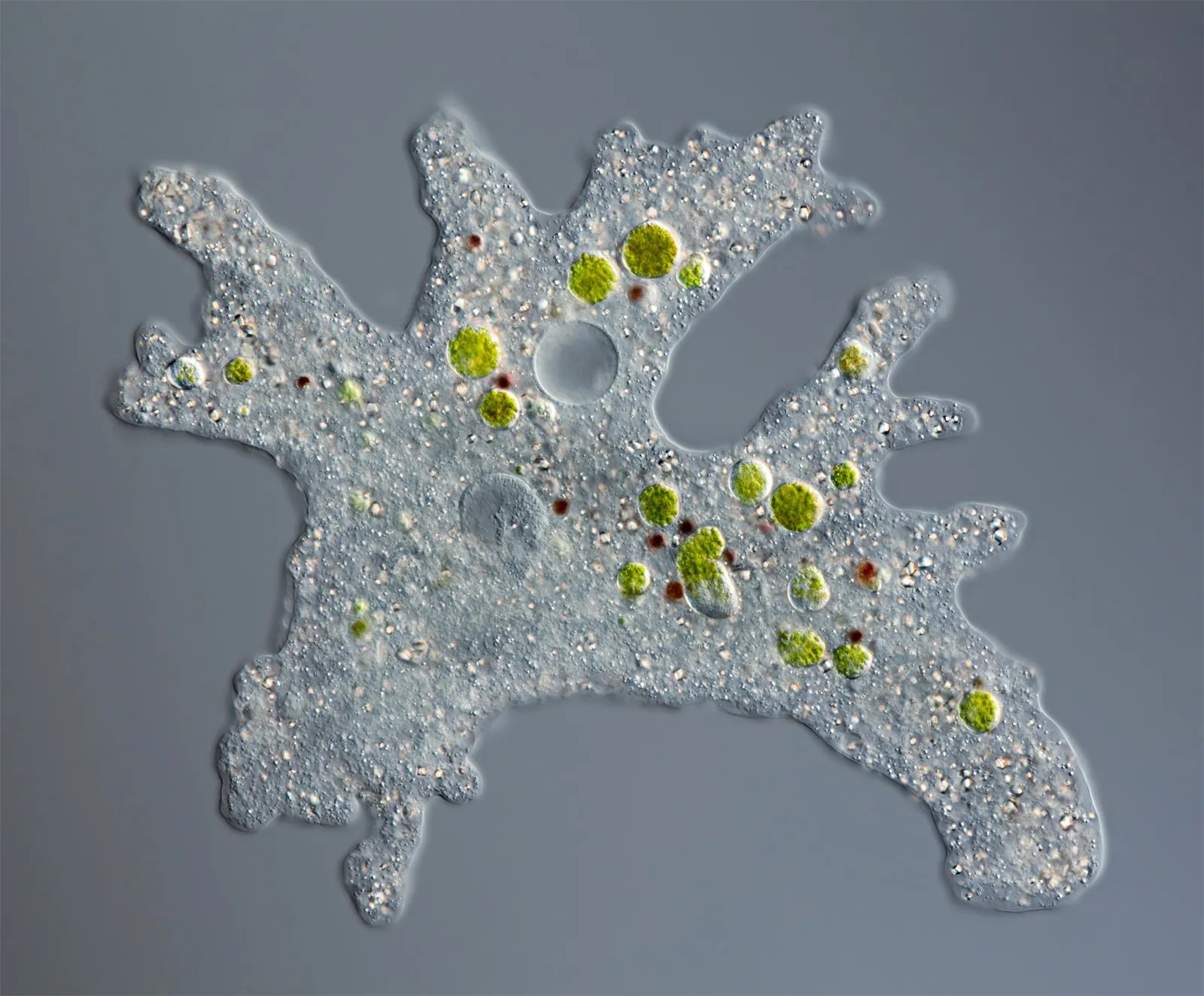Amoebas, those gelatinous blobs found in freshwater ponds and damp soil, might seem like simple blobs at first glance. But these single-celled organisms pack a surprising punch when it comes to energy production. They navigate their micro-aquatic worlds, engulfing prey, and even reproducing – all fueled by a surprisingly sophisticated internal engine. So, how do these tiny titans of movement and growth conjure up such energetic feats? Dive with us into the fascinating world of amoeba metabolism and uncover the secrets to their power.
Fueling Up: The Amoeba’s Feast
Unlike plants basking in the sun’s energy or autotrophs crafting their own meals, amoebas are heterotrophs. They rely on phagocytosis, the fancy term for engulfing food particles like bacteria, algae, and even other protists using their ever-extending pseudopodia. Imagine tiny, flexible fingers scooping up a delicious meal – that’s essentially what an amoeba’s pseudopodia are doing!
Digestion Decoded: Breaking Down the Feast
Once a food particle is trapped within the amoeba’s membrane, it forms a food vacuole. This specialized sac acts as a microscopic kitchen, housing digestive enzymes that break down the complex molecules of the prey into smaller, usable units. Proteins are chopped into amino acids, carbohydrates into sugars and fats into fatty acids. Think of it as a tiny chef expertly preparing a multi-course meal for the amoeba’s internal machinery.
Cellular Powerhouse: The Magic of Mitochondria
Just like our own cells, amoebas have tiny power plants called mitochondria. These bean-shaped organelles take the processed food molecules from the digested feast and convert them into ATP, the cellular currency of energy. ATP fuels all sorts of activities, from movement and growth to reproduction and waste removal. It’s the amoeba’s internal battery, that keeps it up and running.
Beyond Food: Alternative Energy Sources
While food is the primary source of energy for amoebas, they’re not one-trick ponies. Some species can tap into alternative sources under certain conditions. For example, some can absorb dissolved organic matter directly from their environment, while others can even break down complex sugars through anaerobic respiration, a process that doesn’t require oxygen. This adaptability ensures that amoebas can thrive in diverse environments, even when food is scarce.
Beyond Energy Production: Adapting to Different Environments
The amoeba’s energy production strategies are surprisingly flexible, allowing them to adjust to changing environments. In warm, oxygen-rich conditions, they rely heavily on aerobic respiration in their mitochondria. But when oxygen levels drop, like in deeper waters or stagnant ponds, they can switch to anaerobic respiration, even fermenting sugars to produce energy. This metabolic versatility is a key reason why amoebas are found in such a diverse range of habitats.
Energy for Movement: The Power of Pseudopodia
The amoeba’s signature movement, the constant flow and extension of its pseudopodia, is also intimately linked to its energy production. ATP fuels the contraction and extension of these microscopic limbs, allowing the amoeba to crawl, search for food, and even escape predators. It’s like having a team of tiny, energy-powered construction workers constantly building and rebuilding bridges to navigate the amoeba’s world.
Energy for Growth and Reproduction
Producing new cells and dividing to reproduce requires a significant investment of energy. Amoebas utilize the ATP generated from their metabolic processes to synthesize new proteins, lipids, and DNA, ultimately leading to cell division and the creation of new amoebas. It’s like using the energy from a delicious meal to bake a whole new cake, ready to explore the world and find its own energy sources.
The Takeaway: A Tiny Powerhouse in Action
Amoebas, despite their simplicity, are surprisingly adept at generating and managing energy. Their clever combination of phagocytosis, digestion, efficient cellular respiration, and even alternative energy sources allows them to extract the most out
of their environment and power their vibrant lives. So next time you encounter these microscopic marvels under a microscope, remember the bustling world of energy production happening within their seemingly unassuming bodies. They are a testament to the remarkable diversity and ingenuity of life, even at its most basic level.
Further Exploration:
To delve deeper into the fascinating world of amoeba energy production, consider exploring these resources:
- National Geographic Education: Amoeba explores the anatomy and behaviour of these organisms.
- The Biology Corner: Amoeba Digestion provides a detailed look at the digestive process within amoeba.
- Khan Academy: Cellular Respiration explains the process of ATP production in mitochondria, applicable to amoebas and other organisms.

Leave a Reply